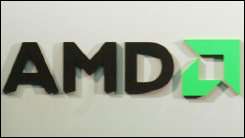(PhysOrg.com) -- AMD has announced some new additions to its Fusion APUs optimized for notebooks, netbooks and PCs. Users will see the immediate difference in battery life and enhanced graphics. So what’s an APU? AMD supports the new computing approach of knocking down the walls dividing central processing units (CPUs) and graphics processing units (GPUs). APU stands for Accelerated Processing Unit. The APUs combine CPU cores with parallel GPU on a single die. The consumer wins in getting computing devices with better graphics and better performance. Specifically, the new updates are for the C and E series of AMD APUs for notebooks, netbooks and desktops.
The big-deal enhancements are a longer resting battery life (up to 12 hours) with 10.5 hours on the E series and 12 hours on the C series.The better-definition graphics have also been a hot talking point. The improvements involve support for DisplayPort++ and HDMI 1.4a. As for the battery-life statements, it is useful to keep in mind that "resting" refers to the fact that the life is 12 hours if the computer is turned on but idle.
AMD’s APU boosts are immediately available from most vendors now.“APU momentum is driving increased sales with our newest notebook customers," said Thomas Seifert, acting chief executive for AMD.
In a computer industry where vendors need to hustle for differentiators in a sagging economy, AMD has seen its Fusion line translate into sales success, slicing into Intel market share. Fusion chips compete with Intel's Atom. Fusion from AMD has also helped to advance an AMD reputation for delivering good processor performance and graphics capabilities.
AMD has been promoting its APU approach, propelled on by the fact that its Fusion line has helped to save the bottom line. As of July, Fusion chips accounted for 50 percent of its mobile sales revenue, according to reports.
Not included in the latest AMD announcement of additions was mention of the Z series, which is meant for tablets. The Z series launched in June. "We will focus on the ultra thin-and-light laptops, but not the smartphones and tablets for now," an AMD source told The New York Times.
More information: via Press release
© 2011 PhysOrg.com




















